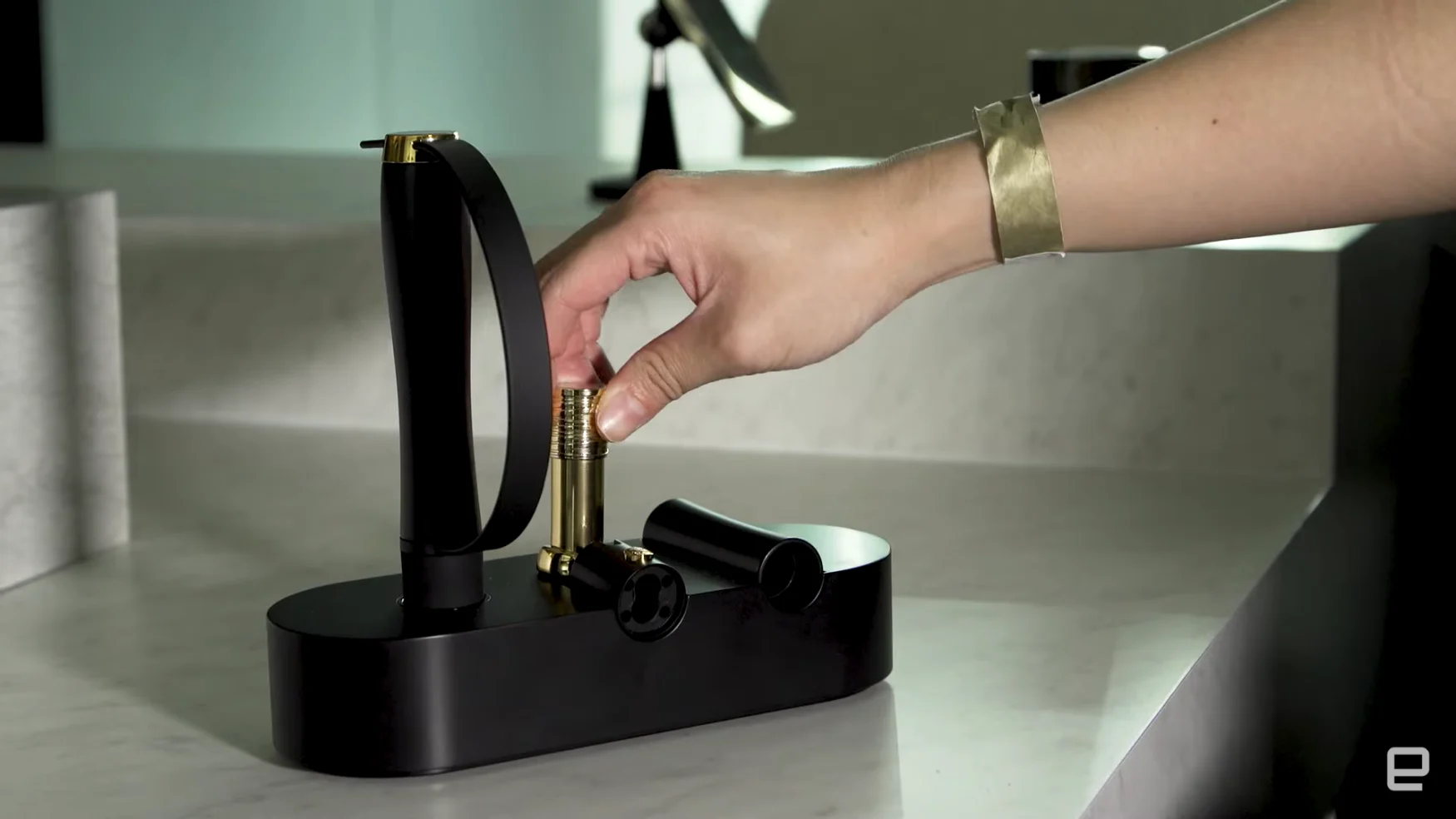In years past, L’Oréal has shown up at CES with gadgets that deliver personalized beauty products to consumers. From the Perso custom skincare dispenser to the YSL at-home lipstick maker, the company’s tech lab has brought interesting gadgets to the show that have tangential inclusive benefits. But this year at CES 2023, it’s introducing an accessibility-minded device that can help those with limited hand or arm mobility apply lipstick. The system is called Hapta, and based on a quick demo I tried here in Vegas, is surprisingly refined.
It’s worth noting right off the bat that some assembly is required to use the system. There are three general parts to Hapta: the lipstick in a custom case, the gimbal on a mount and a grip. To set the device up, you’d need to have all three components set up on a stand. In this initial setup, the lipstick is in a custom holder that has a spring-loaded release. This makes it possible for someone to remove from the case with one hand. In theory, that is. In reality, at least on the version I saw at CES, the release is still a little too strong, and the lipstick shot straight out of the case and almost onto the floor.
For now, if L’Oréal doesn’t refine the system, you’ll have to find a way to place a finger or obstruction behind the lipstick before pressing the button. Once you remove the lipstick, you have to place it in the ring attached to the gimbal, which didn’t take much effort. Then, you’ll have to pick up the grip, line up a symbol on its edge with a corresponding button on the gimbal mount, and slide the handle in. In about a second, the device chimes to indicate that the attachment is secure, and you can pick up the entire thing with one hand and bring it up to your lip.
But first! As of the iteration I saw at the demo, you’ll still need to use two hands to twist the lipstick so that enough is peeking out for the application. L’Oréal told me after watching me struggle to make this happen with one hand that it would consider looking into ways to simplify this process.
Once the lipstick is ready, you can put it up to your mouth and pause for a second to sort of calibrate the Hapta. It’ll understand what position is upright and maintain that by compensating against any motion while you move the grip around.
To be clear, for hygiene reasons, I did not apply this lipstick on my mouth, and because of that I don’t know how well the application process performs. But from my using it to hover over my lips as I moved my elbow and wrist, the gimbal felt sturdy enough to withstand some pressure, and the motors were very responsive. In general, the Hapta was quick to react to my motion and keep the lipstick level, which is important if you’re trying to draw a precise line near your cupid’s bow, for instance. For those who might not have the finger strength or dexterity to hold up something as small as a tube of lipstick, I can see Hapta being useful.

Joel Chokkattu / Engadget
The Hapta will be available for between $149 and $199 starting in December, and L’Oréal said it will also be making a version that’s designed for people with tremors in their hands. In spite of the few quirks I saw at the demo, I was mostly impressed by what the company has made so far. This is by no means just a prototype. Everything felt polished, which makes sense as L’Oréal worked with utensil maker Verily that made utensils that level themselves for people with limited hand and arm movements.
Also, L’Oréal said in a press release that Hapta will launch with Lancôme lipsticks in 2023, but that it will be “followed by additional makeup applications in the future.” It’s not only nice to see people with disabilities being included in beauty tech, but it’s also encouraging that a brand as big as L’Oréal is actively working on tools to enable independence in makeup application for everyone.
All products recommended by Engadget are selected by our editorial team, independent of our parent company. Some of our stories include affiliate links. If you buy something through one of these links, we may earn an affiliate commission. All prices are correct at the time of publishing.
Credit: Source link


Comments are closed.